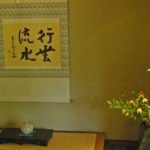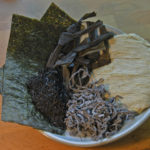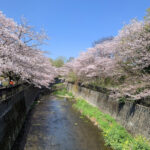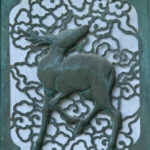
The locally grown citrus fruit of natsumikan is a symbol of the town of Hagi in western Honshu.
DAVID CAPEL
Back in a far-off, less-globalized day, when Japanese restaurants around the world were about as common as hen’s teeth and for all most people knew “sushi” could have been the name of a motorcycle manufacturer, there was one common taste of Japan that people living in remote countries were often able to enjoy. As winter nights drew longer and people in Western lands started looking forward to such festivities as Christmas and New Year, there began to appear in stores an orange-colored oblate fruit about the size of an overgrown golf ball. And so for many people, along with Brazil nuts and foil-wrapped chocolate coins, a fond childhood memory of the taste of the festive season is that of satsumas.
Because they are sweet, seedless and—unlike many citrus fruits—easy to peel, with the peeling process rarely involving an accompanying eyeful of squirted juice, satsumas have long been a very child-friendly fruit. Known as mikan in Japan, satsumas are grown in enormous quantities in this country. Satsumas take their name from the former province of Satsuma, which largely corresponds to modern-day Kagoshima Prefecture in the southern part of the southern main island of Kyushu. The name arose because in the Meiji period (1868–1912), they began being taken from this province to the United States, where they proved popular. Today though, other parts of the country account for the greatest production of this remarkably cold-resistant fruit.
Satsumas are the best known among Japan’s citrus fruits, but they are just one of the remarkable variety that are widely enjoyed in the country. The fruit called yuzu, also known as the citron, does not make for good eating, but it has won a particular place in Japanese cuisine because of its marvelously aromatic rind. The distinctive flavor is a complex, tangy blend of lime, lemon and grapefruit, and its floral fragrance is unlike that of any citrus fruit familiar in the West. The sour flesh may be used for its acidic juice, but it is the small pieces and slivers of the skin that deliver a bright fragrance to soups, simmered dishes, pickles, relishes and sweet confections. Yuzu also figures as a dipping sauce called ponzu, whose major components are soy sauce, vinegar and yuzu juice. Ponzu is a nearly perfect foil to the toasty flavor of charcoal-grilled matsutake, a usually expensive type of mushroom that many would regard as not only the pinnacle of autumn fare, but also the most sublime gastronomic experience in existence.
The main citrus rival as an accompaniment for matsutake goes by the name of sudachi. Smaller than yuzu, sudachi has the same pale-yellow color when ripe, but it is commonly used while still green for its sharp juice and fragrant zest. Another green citrus fruit that is widely employed in cooking is kabosu. This juicy fruit has the sharpness of lemon and is often used as a substitute for vinegar to make sunomono vinegar-dressed salads.
Locally, some citrus fruits take on considerable economic importance. In the port of Hagi at the western end of the main island of Honshu, the large, slightly bitter, orange-colored citrus fruit of natsumikan was grown by ex-samurai when they suddenly found themselves without their former exalted status and — more pertinently — without too much money after the stipends they used to receive were cut off at the end of the Edo period (1603–1867). In Hagi, the town’s former economic mainstay appears conspicuously in such confections as cookies and marmalade. But what all sensible visitors to the place simply have to do is sample the local natsumikan ice cream—vanilla shot through with veins of the tart fruit—and find it little short of divine.
In addition to their fine flavor, natsumikan also have significant aesthetic qualities. The image of the orange fruit hanging above the distinctive white walls and gray tiles of this attractively well-preserved town is almost a symbol of Hagi. And indeed throughout Japan, the sight of ripe citrus fruit as a cascade of orange spheres against the deep jade green of the leaves is one to lift even the lowest spirits on a bright sunny day.
David Capel is a journalist living in Tokyo.








